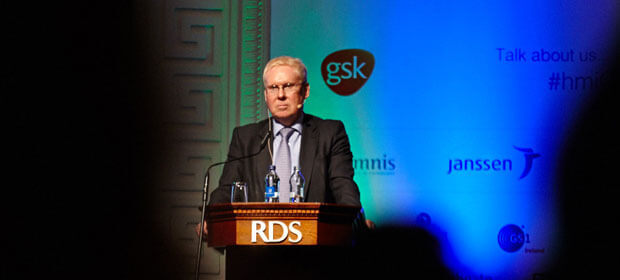Health Managers were advised not to cut corners or cross the line of a safe service, by Mr. David Flory, retired Chief Executive NHS Trust Development Authority, when he addressed the Conference.

Mr. Flory who recently completed a review of maternity services in two Irish hospitals brought his extensive experience as a leader in the NHS to the discussion about what managers had to do to deliver safer services in the Irish health system.
“Ultimately you will be better judged for not providing a service at all than trying to provide it inadequately,” he said.
Mr. Flory said the service would take a long time to recover from the legacy of the period of significant austerity and cuts. Systems needed to be built which could talk to each other and which could provide data in real time to support decision making.
Saying we can’t do it anymore is the most difficult message to communicate upwards and outwards through the system and it can damage trust.”
“There isn’t a budget to do all we want to do. When you have to make a decision that impacts on healthcare for patients today and for those down the line, you need to get it right. Can we continue to run services safely with the money we have? There is pressure right through the system to say ‘yes.’ It is part of managers’ responsibility to say they cannot. If you cut corners and make do with what you have to deliver that service tomorrow and next week you compromise yourself, the people you serve and your colleagues.
“When data gives you one version of what is going on you can say this is where we draw the line and we can’t go beyond that as the service is not safe.”
“Saying we can’t do it anymore is the most difficult message to communicate upwards and outwards through the system and it can damage trust.”
Mr. Flory said that if somebody was really boxed in, the pressure was there to pass it on by asking somebody else to do something they could not do.
“This challenges the trust and confidence that we need to create the right environment for people around us. You come back and say these are the consequences if I do it and I cannot accept these consequences.
“Never get to the point where you are having to be seen to make a choice between quality and money because you cannot make a choice at that point.”
Mr. Flory said there needed to be some more rounded discussion based on systems, procedures and data and there was a need for discussion on how we could do more than we did now, whether we could do it without spending as much money. Did we invest in quality or did we manage the money? He thought the fundamental answer was systems. data processes and analytics but the environment which people created was what really achieved the results you wanted them to achieve.
You come back and say these are the consequences if I do it and I cannot accept these consequences
He said he had worked with a spectrum of leadership styles which had been effective. “I have worked with leaders who had a vision for the future and could create a compelling narrative of how to get from where we were to where we needed to be in the future. When you can create that narrative and connect people to it, you can do the right thing in a highly motivated way. I have also worked with fantastic people whose focus was on incremental improvement every day and making things a bit better than they were the day before. And in the end the Cortina you started with starts to feel more like a Ferrari. The belief people have in it and the mindset of improvement is unstoppable when that works.
Really for all of us to be effective leaders in our roles we need bits of both approaches.”
Mr. Flory said the leaders of the team needed to come together and ensure they got the environment right in which good systems and processes could support safe services. That environment throve in places where values were properly aligned. It started with doing the very best for the patient and population which workers served and everything else flowed from that. “It sounds simplistic but I think to create an environment for safe services, the alignment of values is crucial.”
He said that the complexity of change required a multiplicity of talents and experience, then people needed the space to get on with it. You needed trust and confidence to innovate, it involved taking some risks, not in an irresponsible way but in a way in which people felt supported to find more creative solutions to the problems they faced.

